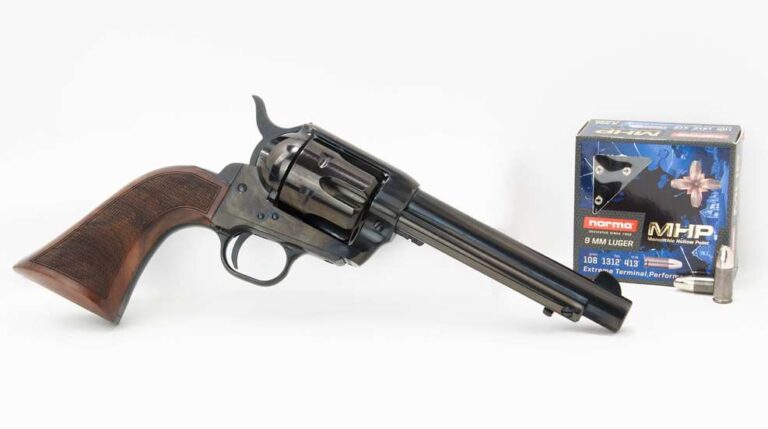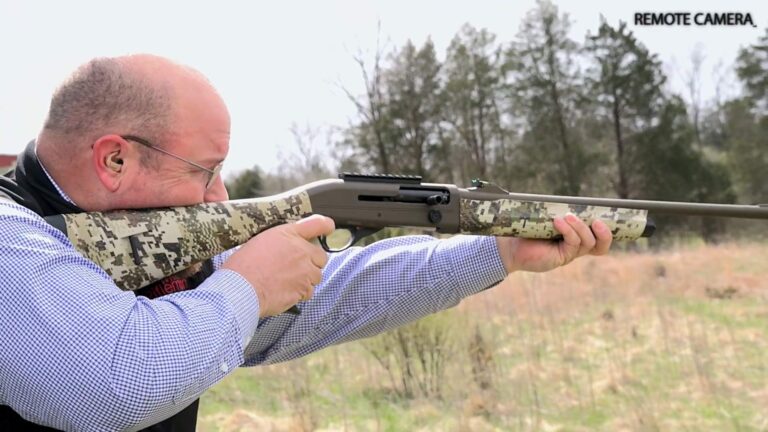Evolution Of The BM-59
Evolution Of The BM-59

Every service rifle that has ever been adopted by any military has gone through some kind of design development evolution that paved the way from prototype to acceptance and production. Nowhere is that truer than in the U.S. during the development of the M1 rifle. That process was long, drawn-out and expensive, and it stretched back to the year 1927 when John Garand first introduced his gas-operated, .30-cal. T1 rifle. From there, the rifle continued to evolve until it was standardized as the M1 on Jan. 9, 1936, and it even evolved after that until mid-1940 when it reached the version that was fully optimized for mass production.
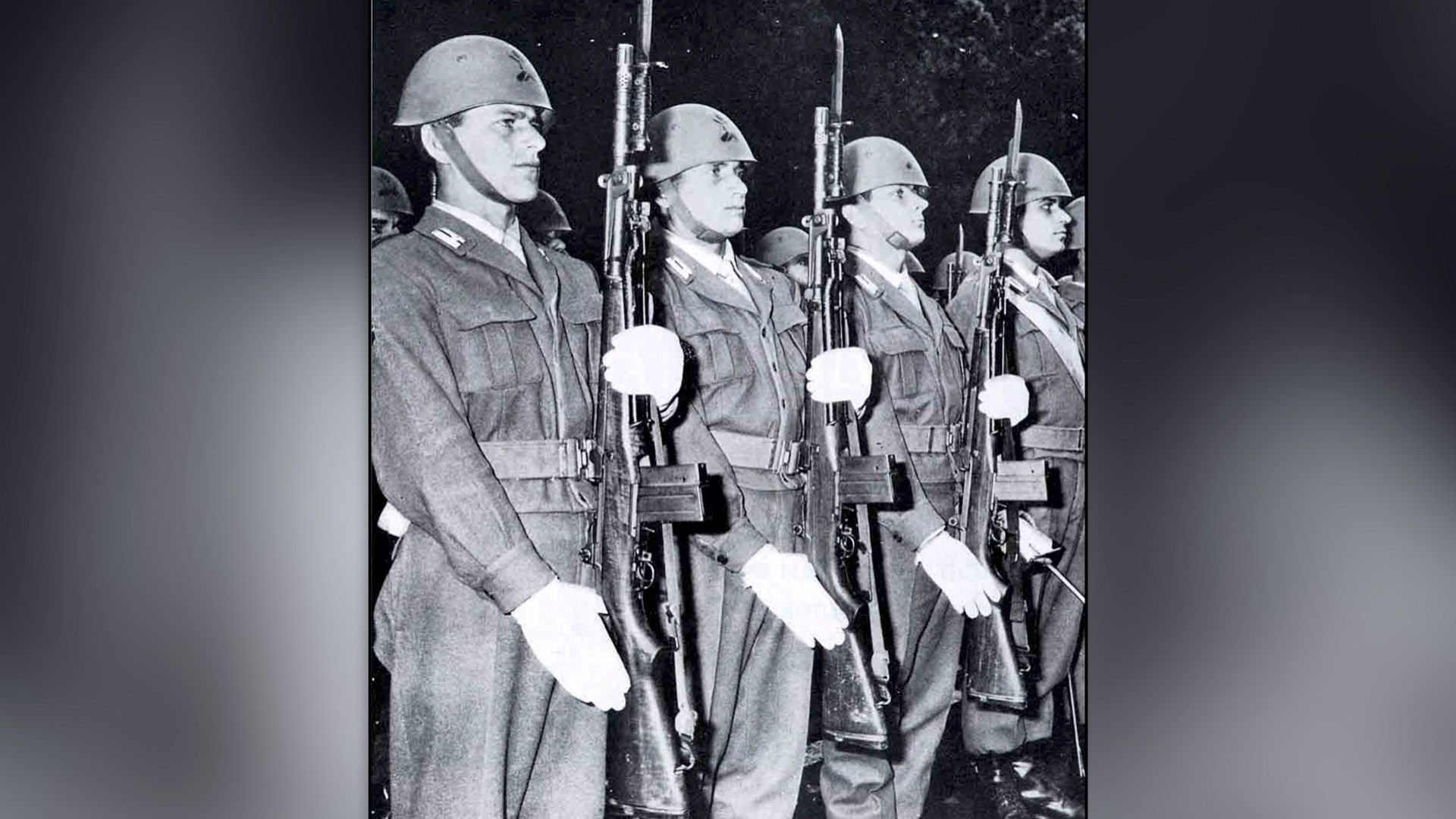 An Italian honor guard armed with BM-59 Ital select-fire rifles in Rome in 1966.
An Italian honor guard armed with BM-59 Ital select-fire rifles in Rome in 1966.
The M1 would change very little from there until the end of production in 1957, but then something unexpected happened. As a result of the confrontational politics of the Cold War and the subsequent divisions it created, the M1 rifle continued to evolve on another continent. Two highly competent engineers would take Garand’s work, modernize it and make it distinctly better. Although he certainly did not know it back in the 1930s, Garand was doing the preliminary developmental work for a pair of Italian engineers named Domenico Salza and Vittorio Valle, both of whom would ultimately give the M1 a new breath of life and extend its legacy through to the present in the form of the Fucile Automatico Leggero BM-59.
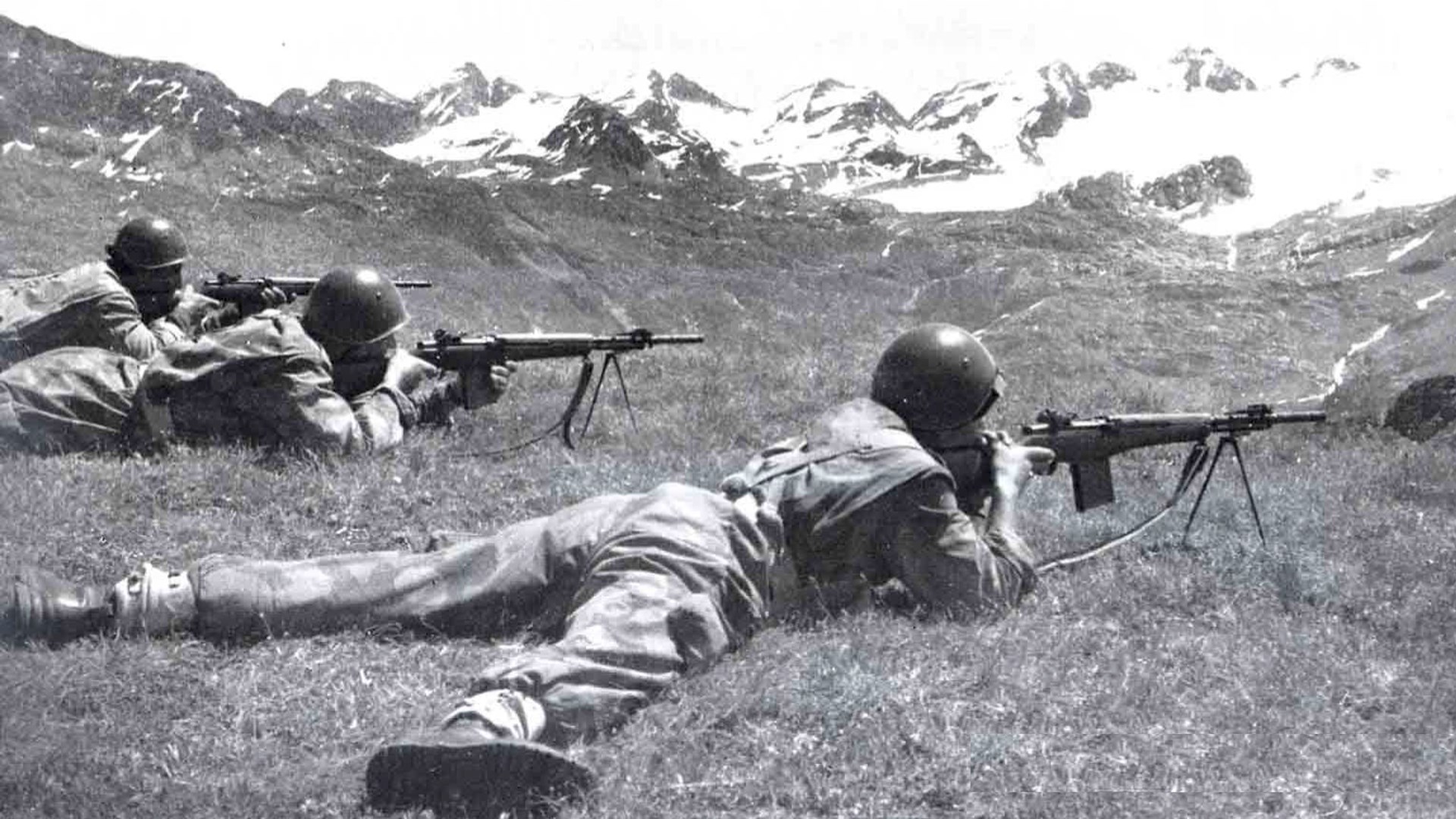 Italian troops firing their BM-59 Alpini rifles from their bipods.
Italian troops firing their BM-59 Alpini rifles from their bipods.
The Second World War ravaged Italy, and rebuilding progressed slowly during the years that immediately followed it. With the end of the conflict, the Italian military had to be rebuilt and rearmed, but the guns that it used during the ‘30s and ‘40s were either obsolescent or at the end of their service life or, in some cases, both. Fascist-era bolt-action rifles, machine guns and submachine guns could be used as an interim stopgap, but they could not solve the bigger problem. While there was a need to arm the Italian military with something other than World War II surplus, the development and mass production of a modern service rifle was an extravagance the country just could not afford. So, beginning in late 1945, the Italian government began purchasing M1 rifles from the U.S. That number had reached more than 100,000 by 1950 when Beretta and Breda began producing the M1 domestically using the same tooling that Winchester had used to produce the rifle during World War II.
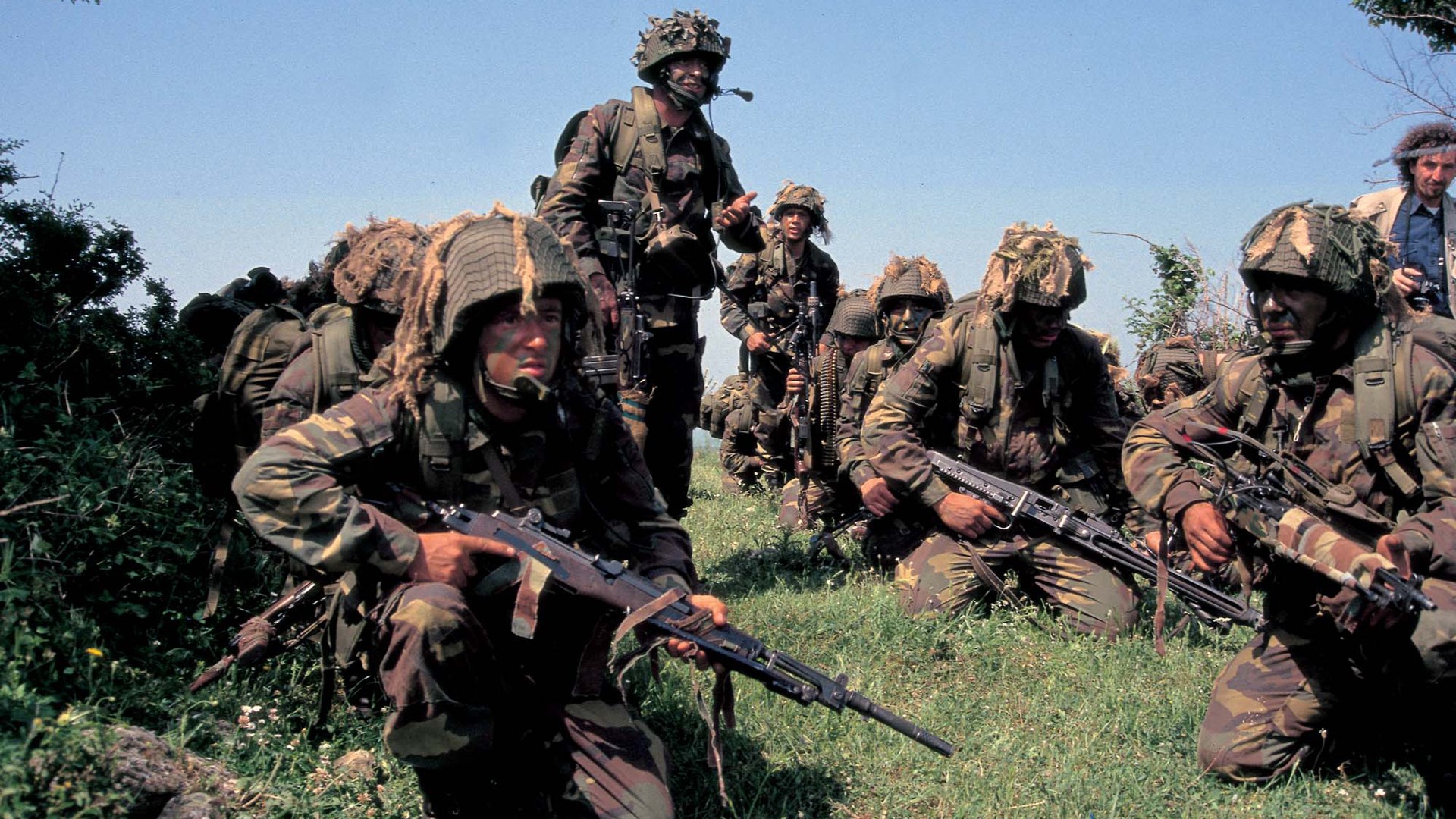 Italian paratroopers on a field training exercise in 1990. Note that one man is armed with the Beretta MG 42/59 (MG3) machine gun and that the others are armed with the BM-59 Paracadutisti rifles.
Italian paratroopers on a field training exercise in 1990. Note that one man is armed with the Beretta MG 42/59 (MG3) machine gun and that the others are armed with the BM-59 Paracadutisti rifles.
In the years that immediately preceded the establishment of the NATO collective security alliance in 1949, the Garand was still a formidable and effective service rifle, but by the mid-‘50s, it had become a dated design. At the time, the military forces of the other NATO member nations were, one-by-one, developing and adopting select-fire rifles fed from detachable box magazines and chambered for the then-new 7.62 NATO standard cartridge. Since it was in no position to undertake developing something so costly as a new service rifle, the Italian government decided that it would be more practical just to modernize its existing stockpile of M1s instead. The Garand was, by then, a proven and familiar service rifle, and modifying it to fire the 7.62 NATO cartridge was the most affordable way to bring Italy into compliance with NATO standardization requirements.
 Left-side view of Serial No. 0000279 S, a semi-automatic BM-59 imported by Springfield Armory in the Ital/Mark II configuration with a 19” barrel, a bipod and the distinctive “tri-compensator” muzzle device. Photograph by Jeff Hallinan
Left-side view of Serial No. 0000279 S, a semi-automatic BM-59 imported by Springfield Armory in the Ital/Mark II configuration with a 19” barrel, a bipod and the distinctive “tri-compensator” muzzle device. Photograph by Jeff Hallinan
To that end, engineers at Beretta at first simply modified the eight-shot .30-cal. M1 by installing a newly made 24” barrel, chambered in 7.62 NATO, to create what was eventually designated the “Tipo 1” Garand. While this modification was a success, Beretta soon realized that it could save even more money by modifying the .30-cal. barrels that were already on the M1s in military inventory. To do this, the company simply shortened each barrel half an inch at the breech, which compensated for the 7.62 NATO cartridge’s shorter overall case-length. This modification also required reducing the length of each rifle’s operating rod, rear handguard and stock and yet this was still a less costly undertaking in the long run than manufacturing new barrels. This version of the Garand received the designation “Tipo 2”, and it lowered the overall cost of the conversion program significantly. The service-life extension program that produced the “Tipo 1” and the “Tipo 2” helped transition post-war Italy into the era of NATO standardization, but Beretta was not done with the Garand design yet, and something much more ambitious than a simple caliber conversion was about to happen.
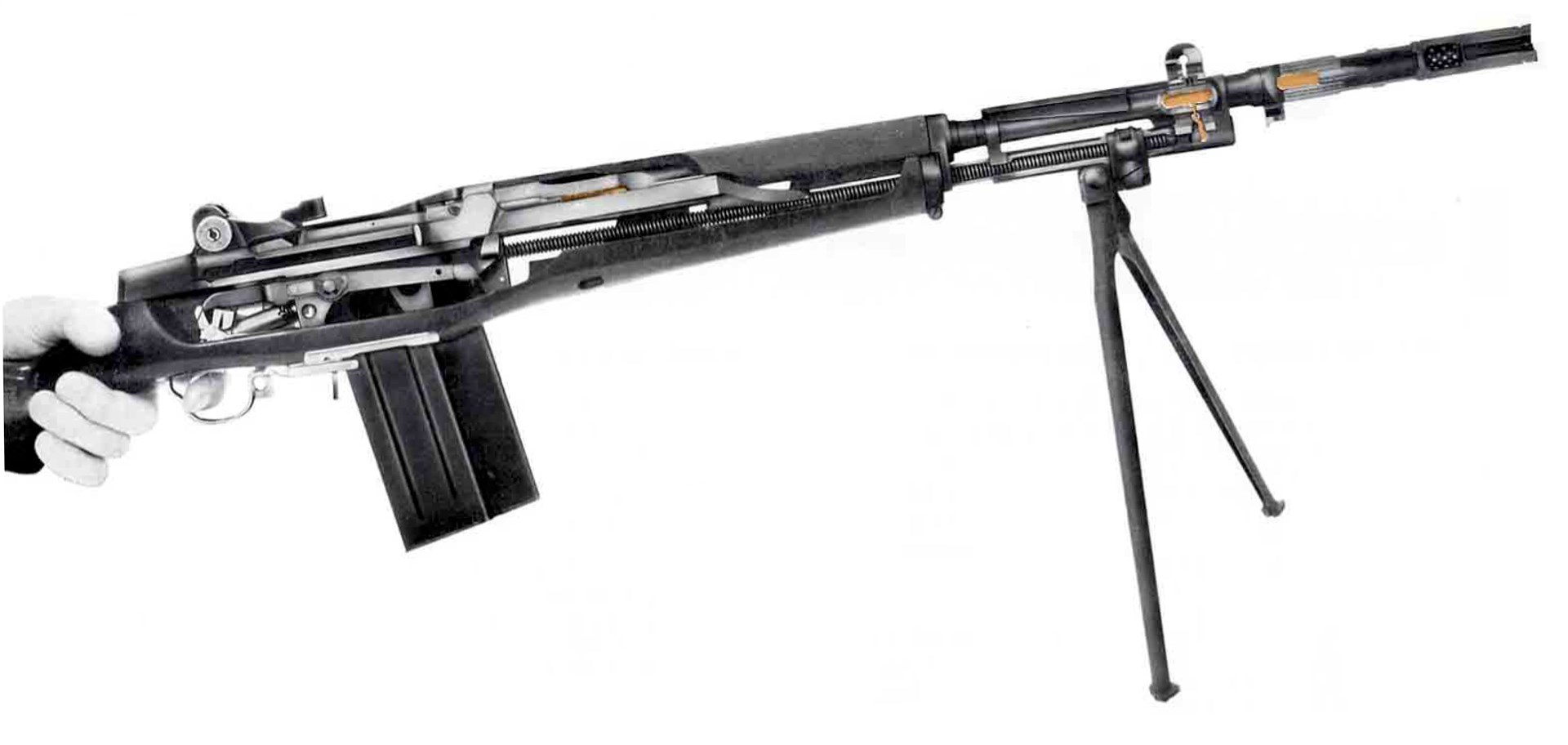 Photo of a cutaway BM-59 Ital that appeared in the Beretta BM-59 sales literature.
Photo of a cutaway BM-59 Ital that appeared in the Beretta BM-59 sales literature.
While the “Tipo 1” and “Tipo 2” Garands brought the Italian military into NATO cartridge compliance, the rifles still sort of belonged to a bygone era insofar as they were a bit long and heavy. This made them a little less than ideal for service in a modern fighting force composed of mechanized and airborne units requiring lightweight and compact firepower. The eight-shot en bloc clip was, likewise, not exactly the optimal feed system for a modern battlefield where the Kalashnikov was a potential adversary. The Garand was still a fine rifle, and the research and development team at Beretta knew that, but if it could lose a little weight, shrink a couple of inches and be converted to feed from a detachable box magazine, the gun could do what the Italians needed it to do. Toward that end, in 1957, two Beretta engineers—Domenico Salza and Vittorio Valle—set out to decrease the size and weight of the Garand, modify its feed system and make it capable of delivering full-auto fire. In less than two years, they created the ultimate conversion in the form of a rifle that combined modified and unmodified parts with newly designed ones. The resulting firearm provided exactly what the Italians needed: an affordable, magazine-fed, select-fire battle rifle meeting NATO standardization requirements. It was designated the BM-59.
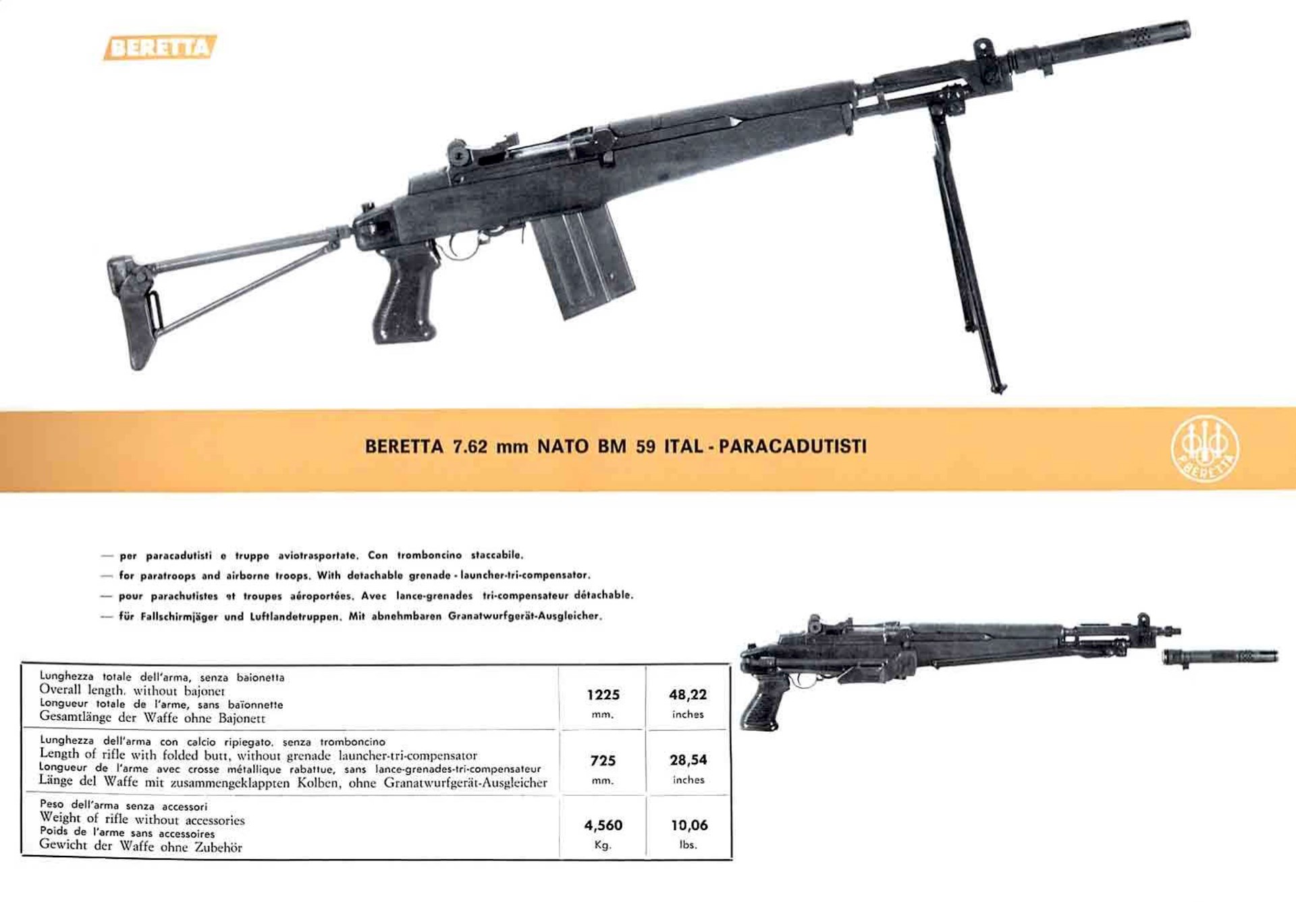 The entry for the BM-59 Paracadutisti that appeared in the Beretta BM-59 sales literature.
The entry for the BM-59 Paracadutisti that appeared in the Beretta BM-59 sales literature.
In 1962, the Italian military adopted the BM-59, and with that, Beretta went to work converting the existing .30-cal. M1s to magazine-fed, select-fire BM-59s in three models: the 9.7-lb. Ital with a 43.11” overall length and wooden full stock; the 9.8-lb. Alpini with a 43.7” overall length and skeletal folding stock; and the 10-lb. Paracadutisti with a 48.22” overall length and skeletal folding stock. Each of these versions was equipped with a folding bipod and the distinctive “tri-compensator” —a device combining a bayonet lug, grenade launcher and recoil compensator/flash suppressor in a single unit. The Paracadutisti featured a removeable “tri-compensator” unique to that model. While these guns would ultimately serve it well during the coming decades, BM-59 conversions were not just for the Italian military.
 Paramilitaries from a Nigerian militant group known as the “Niger Delta Avengers” seen during an attack on an oil facility in the Niger Delta in January 2006. Three of the militants are armed with Mk. IV BM-59s.
Paramilitaries from a Nigerian militant group known as the “Niger Delta Avengers” seen during an attack on an oil facility in the Niger Delta in January 2006. Three of the militants are armed with Mk. IV BM-59s.
The global geopolitical climate that characterized the Cold War gave birth to a unique business opportunity upon which Beretta sought to capitalize. The M1 Garand had been liberally distributed around the free world by the U.S., and the 7.62 NATO cartridge was quickly being adopted even by non-NATO member nations. Looking to make the most of the situation, Beretta offered a BM-59 conversion to suit every budget. Any country interested in upgrading its fleet of M1s could send the rifles in for conversion, and Beretta gave them four models from which to choose. First there was the no-frills 8.4-lb. BM-59 Mk. I with a 41” overall length, a 17.6” barrel and no bipod. Then there was the 9-lb. Mk. II with a 43” overall length, 19” barrel, bipod, “Tri-compensator” and winter trigger; the 9-lb. Mk. III with 38.4” overall length, 17.8” barrel, skeletal folding stock, removeable “Tri-compensator” and winter trigger; and finally, the 12.4-lb. Mk. IV with a 42.5-inch overall length, 21” barrel, full-length wood stock, pistol grip, and heavy bipod. Beretta described the Mk. IV as being “a replacement for the Browning Automatic Rifle” in its promotional literature.
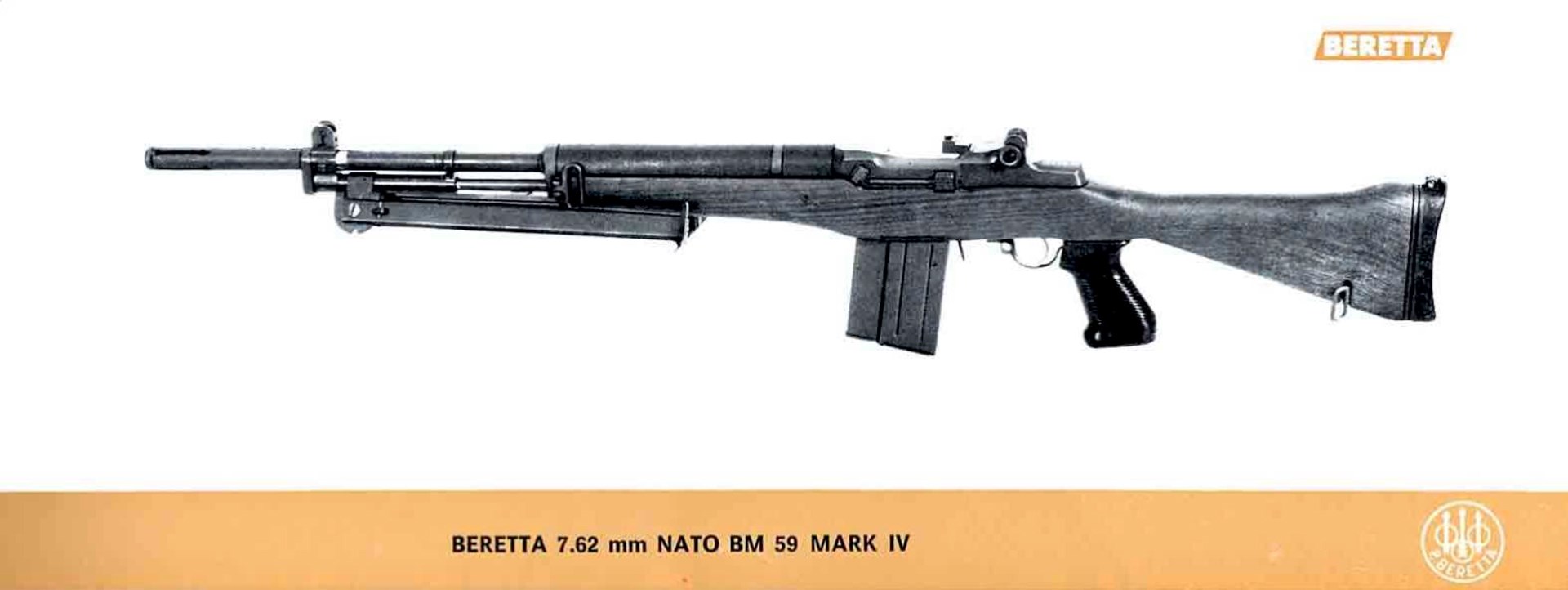 The entry for the BM-59 Mk. IV that appeared in the Beretta BM-59 sales literature.
The entry for the BM-59 Mk. IV that appeared in the Beretta BM-59 sales literature.
Beretta eventually added two more M1 conversion options to its menu in the form of the BM-59E and the BM-59SL. They were both basically just Garand Tipo 2 rifles with the BM-59’s detachable box magazine and clip guide for stripper-clip loading. Like the Tipo 2, both the BM-59E and the BM-59SL replaced the M1’s 24”, .30-cal. barrel with a 23.5” 7.62 NATO conversion barrel. For both the E and SL conversions, a BM-59-type bolt stop replaced the latch used to retain the Garand’s characteristic eight-shot en bloc clip. While the Garand’s gas cylinder remained unmodified in both models, a special muzzle compensator capable of reducing felt recoil and muzzle rise replaced the Garand gas cylinder lock in the BM-59E. This was because the BM-59E was a select-fire conversion incorporating fire control components that allowed for both semi-auto and full-auto fire. Because of that, the BM-59E conversion also involved replacing the M1’s metal buttplate with a BM-59 Ital rubber buttpad that further softened the rifle’s recoil. The BM-59SL was capable of semi-automatic fire only.
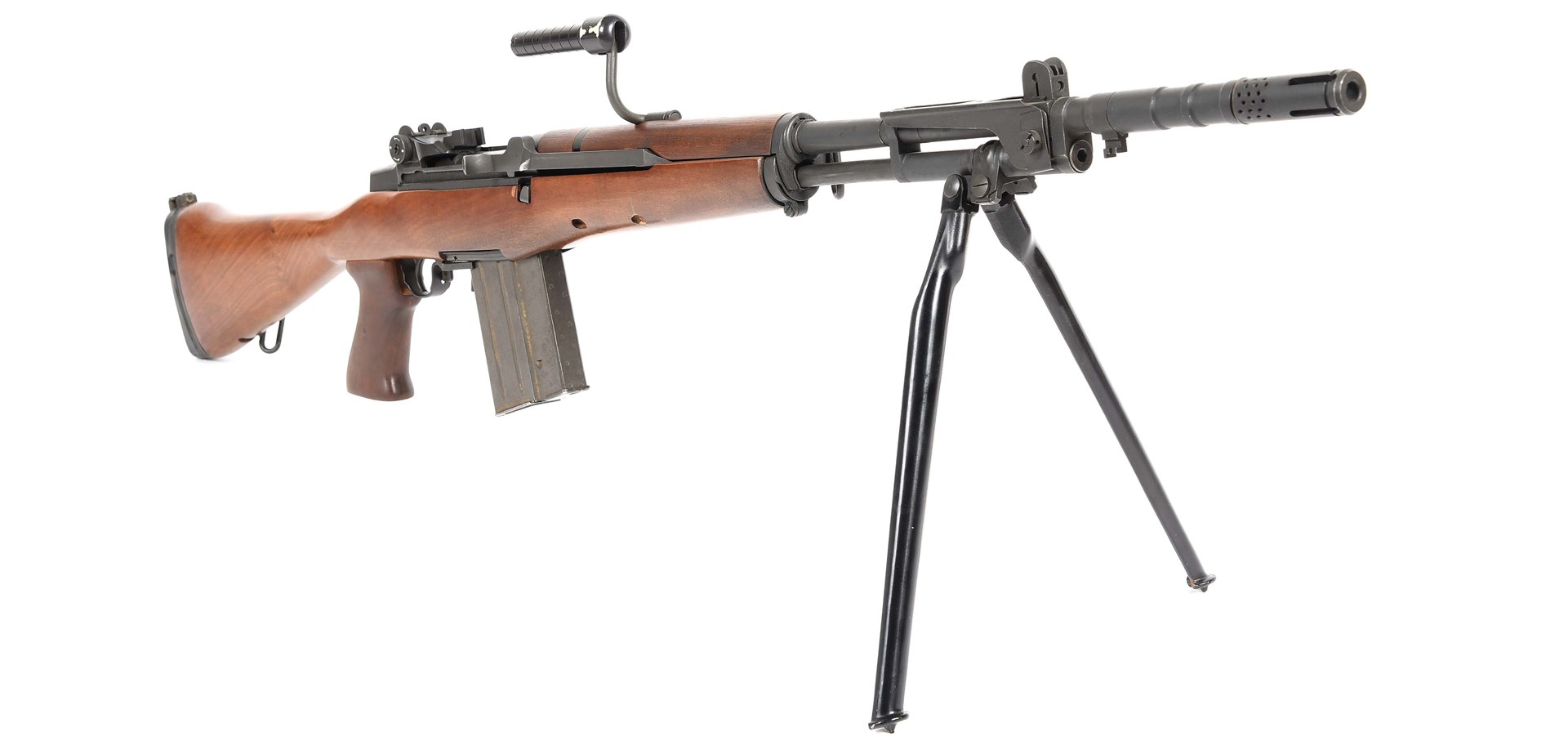 Right-side view of a select-fire BM-59 imported by Springfield Armory in the Mk. IV/Nigerian configuration. Photograph by Jeff Hallinan
Right-side view of a select-fire BM-59 imported by Springfield Armory in the Mk. IV/Nigerian configuration. Photograph by Jeff Hallinan
The various BM-59 conversions took the brilliance of John Garand’s original design and made it evolve. Although Salza and Valle did not manage to make it lighter, they did make the Garand more compact, more versatile and more capable. They improved it in every category. By designing various BM-59 models, they turned the old M1 into a family of general-purpose military firearms that could be issued to anyone from mechanized infantry to paratroopers. They figured out how to make the M1 capable of delivering a greater volume of fire, and they even overcame the engineering obstacles associated with transforming it into a lightweight squad automatic weapon, and they did all of this on a budget in an astonishingly brief span of time. It is one of the greatest evolution stories in the history of small arms because the BM-59 ultimately achieved great success as a military firearm.
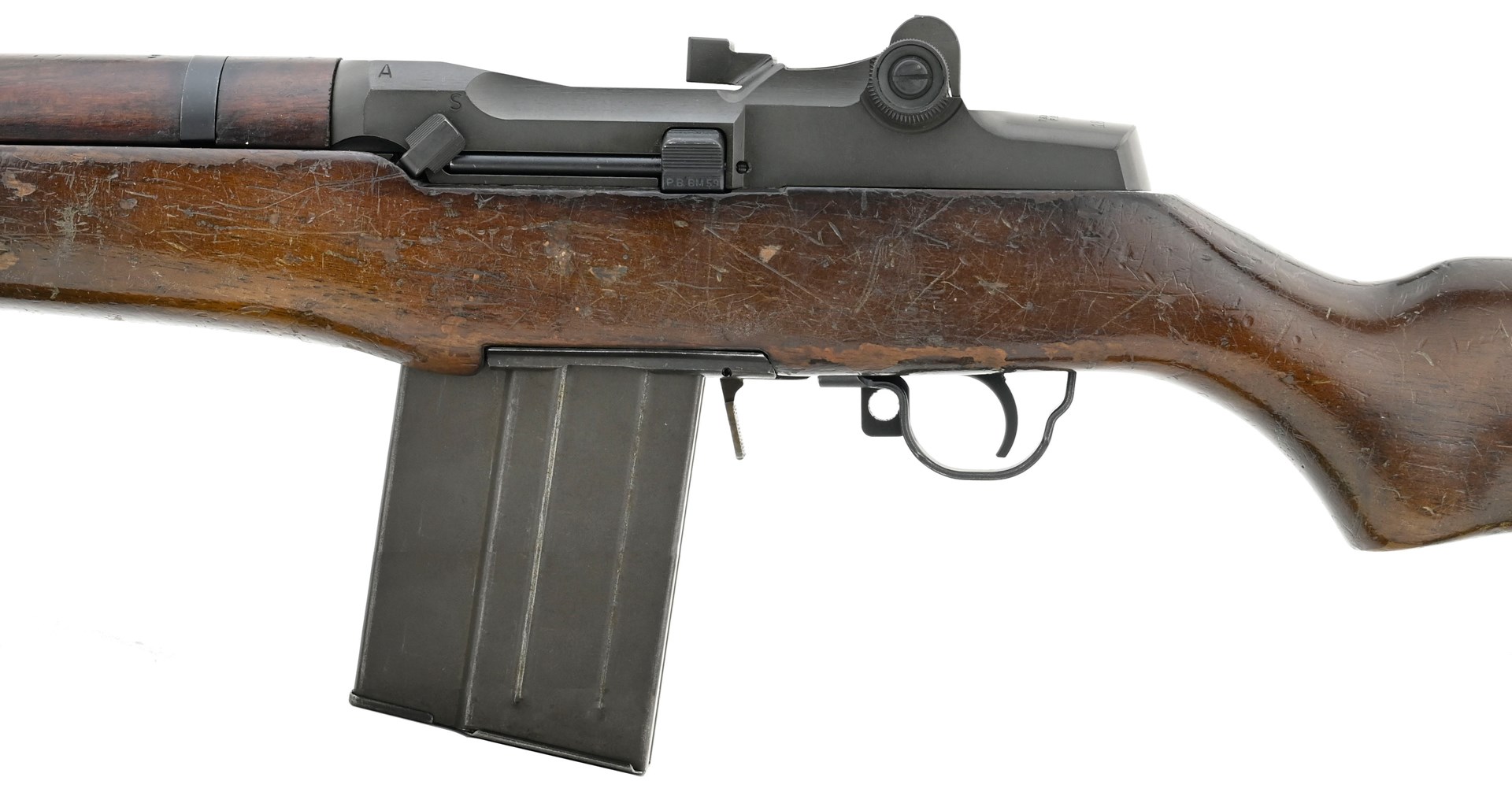 Left-side closeup of a BM-59E assembled using an Argentine parts kit and a Beretta receiver. Photograph by Jeff Hallinan
Left-side closeup of a BM-59E assembled using an Argentine parts kit and a Beretta receiver. Photograph by Jeff Hallinan
It was not just adopted by Italy, but also Algeria, Nigeria, Morocco, Ethiopia, Indonesia, Libya, Somalia and Argentina. In addition to that, the rifle that Salza and Valle designed ultimately made a bit of a splash on the civilian market here in the U.S. During the 1970s and 1980s, semi-auto-only versions of the gun were sold under the BM-59, BM-62, and BM-69 product designations, but the importation of those guns came to an end in 1989. Kit builds made from imported parts kits have given the gun one last lease on life, though, so the BM-59 is still around for now. Although its time as a Title 1 semi-auto available to civilians is quickly coming to an end, its military service does not appear to be ending anytime soon, because it is still serving in places like Indonesia, Argentina and even war-torn corners of Africa. That testifies to the sheer engineering prowess of the two men who took John Garand’s magnum opus and made it better.
Additional Literature & Photographs: The entry for the BM-59SL that appeared in the Beretta BM-59 sales literature.
The entry for the BM-59SL that appeared in the Beretta BM-59 sales literature.
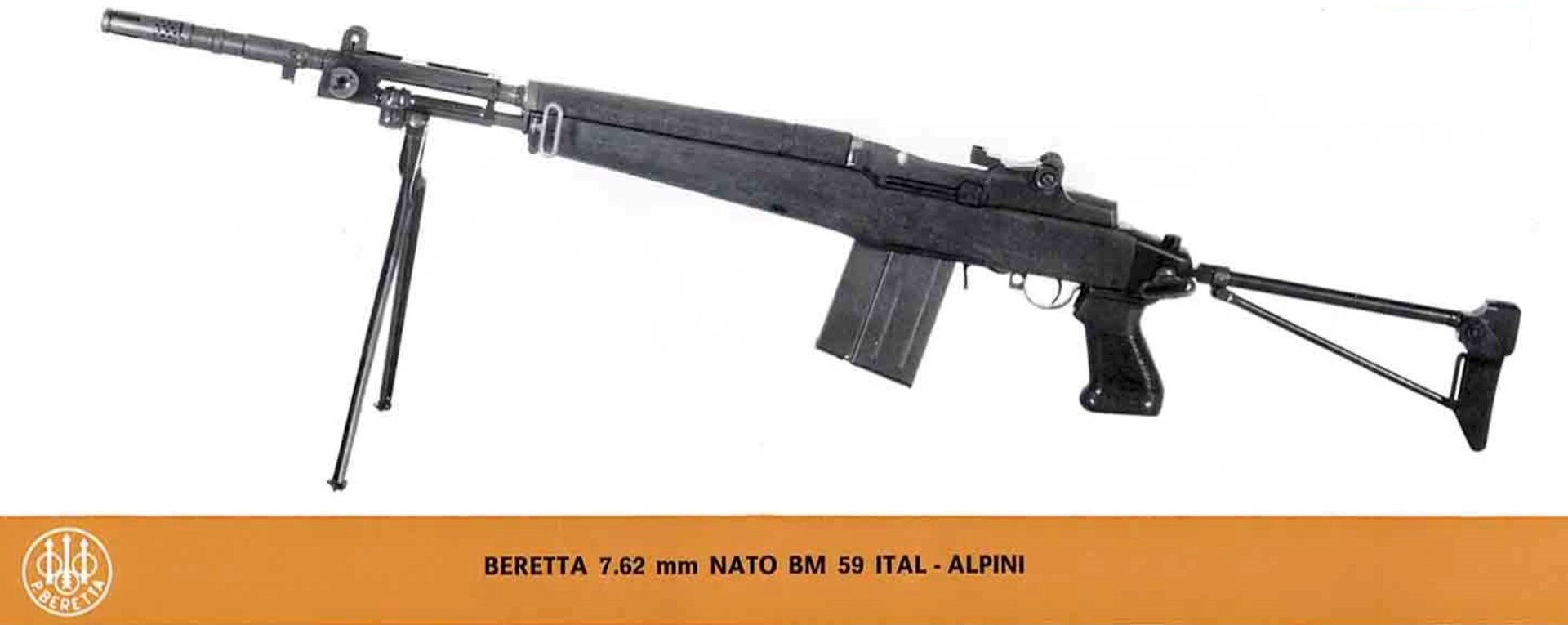 The entry for the BM-59 Alpini that appeared in the Beretta BM-59 sales literature.
The entry for the BM-59 Alpini that appeared in the Beretta BM-59 sales literature.
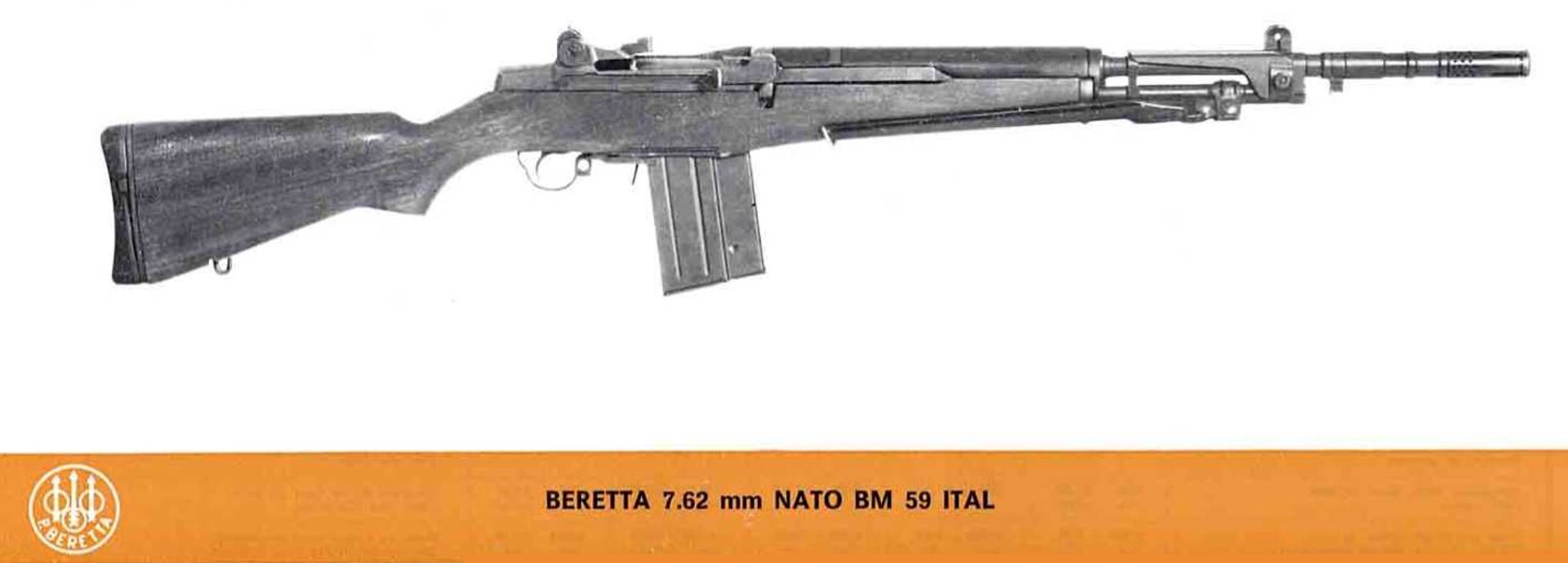 The entry for the BM-59 Ital that appeared in the Beretta BM-59 sales literature.
The entry for the BM-59 Ital that appeared in the Beretta BM-59 sales literature.
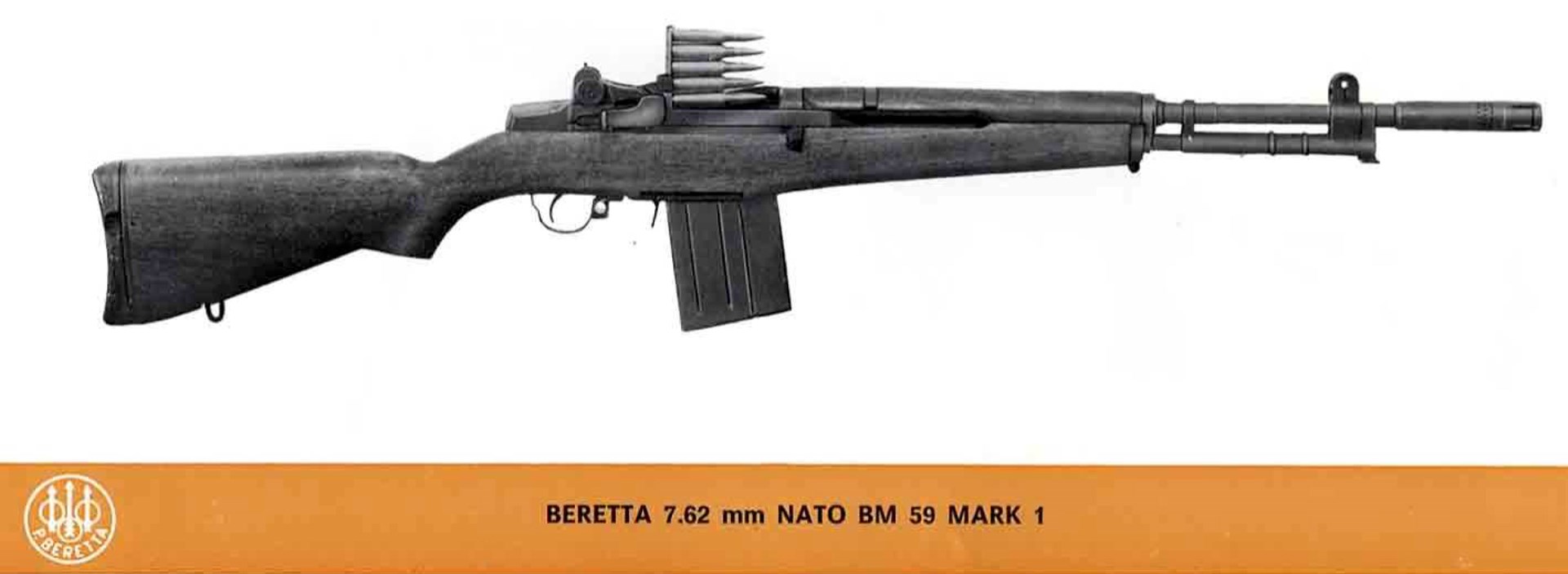 The entry for the BM-59 Mk. I that appeared in the Beretta BM-59 sales literature.
The entry for the BM-59 Mk. I that appeared in the Beretta BM-59 sales literature.

Right-side view of a semi-automatic BM-59 imported by Springfield Armory in the Paracadutisti configuration with a 19” barrel, a bipod and the distinctive “tri-compensator” muzzle device. Photograph by Jeff Hallinan
 Left-side view of a BM-59E assembled using an Argentine parts kit and a Beretta receiver. Photograph by Jeff Hallinan
Left-side view of a BM-59E assembled using an Argentine parts kit and a Beretta receiver. Photograph by Jeff Hallinan



